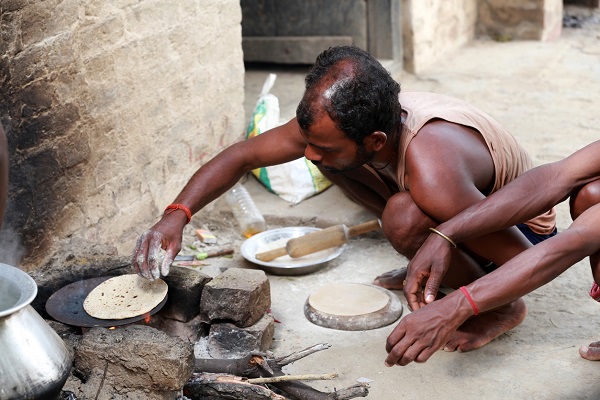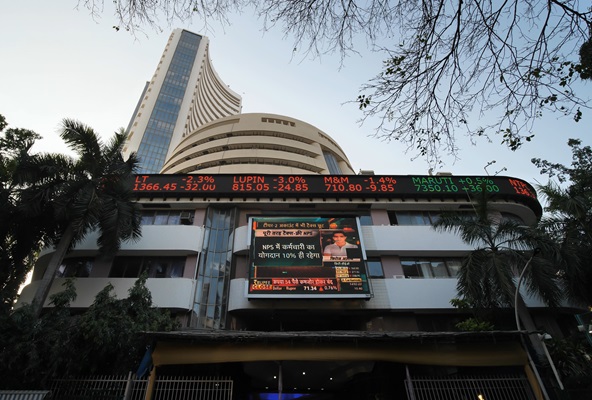.png)
Equities Ride GST Hopes as Bonds, Rupee Struggle With Fiscal, Trade Risks
An end-of-day recap of all that transpired in the Indian markets, highlighting the major price movements and the factors driving them.
September 12, 2025 at 1:08 PM IST
HIGHLIGHTS
- Aurobindo Pharma clarifies on Zentiva deal
- BHEL bags order from South Western Railway for KAVACH equipment
- SEBI seeks disclosure of Kirloskar family agreement
- Vedanta arm ends legacy disputes with SEPCO for 3x660 MW thermal project
Indian equities extended their winning streak for an eighth straight session on Friday, marking the longest run of gains in a year and driving benchmarks to two-month highs.
The rally was led by financials and index heavyweights, with ICICI Bank and Reliance Industries offsetting weakness in FMCG counters. Capital goods and public sector shares were the day’s strongest performers, underlining the rotation of investor flows.
| Indices | Last | Change | % Change |
| SENSEX | 81,904.70 | 355.97 | 0.44% |
| NIFTY 50 | 25,114.00 | 108.50 | 0.43% |
| NIFTY MIDCAP 100 | 58,227.20 | 183.65 | 0.32% |
| NIFTY SMALLCAP 100 | 17,989.90 | 114.70 | 0.64% |
| INDIA VIX | 10.12 | -0.24 | -2.29% |
Sectoral performance
Defence and metals also provided a lift. Hindustan Copper surged 11% after unveiling plans for ₹2,000 crore in capex over the next five to six years. Defence stocks rallied after the government rolled out a 15-year sectoral plan, with Mazagon Dock Shipbuilders and Bharat Dynamics gaining nearly 5% each.
Autos saw fresh momentum. Maruti Suzuki and Eicher Motors advanced, while JBM Auto soared 15%, its sharpest one-day rise in two years, after securing $100 million from IFC. Samvardhana Motherson extended weekly gains, adding 4% on Friday, and Hindustan Zinc climbed 4% as silver prices touched record highs.
Profit-taking hit consumption names, with Hindustan Unilever and Eternal losing around 2% each. Market breadth remained mildly positive, though balanced, with the advance-decline ratio at 1:1, reflecting selective rather than broad-based participation.
| Top Gainers | % Change | Top Losers | % Change |
| NIFTY METAL | 0.93% | NIFTY FMCG | -0.71% |
| NIFTY FINANCIAL SERVICES | 0.70% | NIFTY MEDIA | -0.39% |
| NIFTY PHARMA | 0.53% | NIFTY PSU BANK | -0.27% |
| NIFTY HEALTHCARE INDEX | 0.43% | ||
| NIFTY PRIVATE BANK | 0.41% |
Indian government bonds ended lower on Friday, pausing a two-day advance, as fresh inflation data tempered hopes of further monetary easing. The benchmark 10-year gilts yield rose to 6.4867%, compared with 6.4666% in the previous session, marking a 2-basis-point weekly increase.
Consumer price inflation accelerated to 2.07% in August from a revised 1.61% in July, largely due to rising food costs and the fading impact of a favourable base. While the reading was broadly in line with forecasts, traders said it signalled that inflation had likely bottomed out, reducing the scope for additional near-term rate cuts by the Reserve Bank of India. The central bank has already delivered 100 basis points of easing this year but held rates steady at its most recent meeting.
Beyond inflation, supply dynamics remain a challenge for the bond market. Investors are awaiting clarity on the government’s second-half borrowing plan, due later this month. Market participants are particularly focused on whether New Delhi will moderate the supply of longer-tenor securities, which have weighed heavily on sentiment.
Data show that the weighted maturity of sovereign and state issuances has climbed from 13.4 years in FY21 to 19.7 years so far this fiscal, significantly raising duration risk. At the same time, the spread between ultra-long bonds and the 10-year benchmark has widened to 70–80 basis points, effectively translating into a 10–12% higher borrowing cost for the government,
| Tenure | Today | Previous |
| 10-year Gilt | 6.49% | 6.47% |
| 5-year gilt | 6.26% | 6.27% |
| 5-year OIS | 5.70% | 5.69% |
The Indian rupee appreciated on Friday after a volatile week, supported by a softer dollar as US inflation data matched expectations and reinforced the likelihood of a Federal Reserve rate cut next week. The rupee closed at 88.2750, stronger than Thursday’s record low close of 88.4425, marking a 0.19% gain.
Despite Friday’s rebound, the local unit spent much of the week under pressure, trading below the 88 mark amid sustained foreign portfolio outflows and uncertainty around US tariffs on Indian goods. The currency has faced steady weakness since Washington imposed additional levies on Indian imports last month in response to New Delhi’s purchases of Russian crude.
To offset the fallout, Prime Minister Narendra Modi announced consumption tax cuts, while both nations have signalled readiness to resume trade talks to ease tariff-related tensions. Market participants, however, see the rupee’s trajectory as fragile.
The Reserve Bank of India has been intervening intermittently via state-run banks to limit sharp swings, though it has avoided defending a particular level. Traders said this leaves the outlook dependent on external cues.
Expectations of lower US borrowing costs boosted broader Asian sentiment, with the Malaysian ringgit and Indonesian rupiah leading regional gains. A sustained dovish turn from the Fed could provide near-term relief to the rupee, though tariff headwinds and capital outflows remain risks.
| Unit | Today | Previous |
| Dollar/Rupee | 88.28 | 88.44 |
| Dollar Index | 97.74 | 97.99 |
| 1-year Dollar/rupee premium (%) | 2.34% | 2.32% |
OUTLOOK
Indian equity benchmarks will likely trade with a cautious undertone as investors assess the impact of steep US tariffs on Indian exports and their spillover on corporate earnings. Financials and IT stocks may remain under pressure, while auto, FMCG and select consumption-driven counters will attract buying interest on expectations of GST rate cuts. Market sentiment will also hinge on foreign portfolio flows, which may stay muted until clarity emerges on trade negotiations between New Delhi and Washington. Midcaps are expected to see stock-specific action, with derivatives expiries and sectoral reforms shaping movement.
Government bond yields will remain elevated after inflation uptick and concerns over fiscal slippage from GST rationalisation. The 10-year benchmark yield will likely test resistance near 6.55–6.60%, as supply pressures continue. Traders will closely watch the September GST Council meeting and details of second-half government borrowing. A dovish tilt from the US Federal Reserve could lend some respite, but domestic borrowing expectations will remain the key driver.
The Indian rupee will likely face headwinds from additional US tariffs, with importers’ dollar demand keeping the currency under pressure. While intermittent Reserve Bank of India intervention may limit sharp depreciation, the unit is expected to trade with a weak bias in the 88.40–88.80 band. Prospects of a Fed rate cut will offer temporary relief, but capital outflows and tariff risks will weigh on investor sentiment.
Overall, markets will move in a narrow range, with equity sentiment supported by reform hopes, bonds pressured by fiscal worries, and the rupee constrained by global trade tensions.



